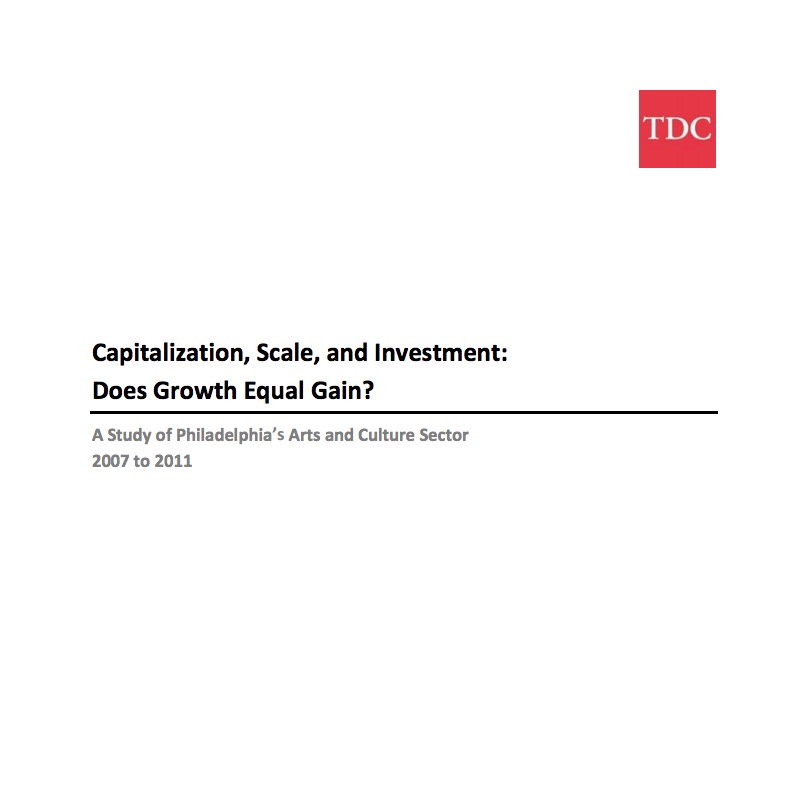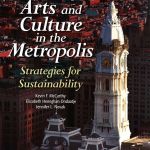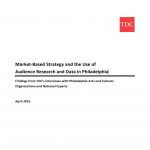Capitalization, Scale and Investment: Does Growth Equal Gain?
In 2009, TDC published Getting Beyond Breakeven, a study commissioned by the William Penn Foundation and The Pew Charitable Trusts, which reviewed the capitalization needs and challenges of arts and culture organizations in Philadelphia. The study had two main findings:
- Weak financial health. Of 158 organizations, over 70% were living in a highly vulnerable state of capitalization, with weak or broken business models, limited access to unrestricted cash, and inadequate means to guard against risk.1
- Strong financial literacy. Of 60 organizational leaders interviewed, 55% had a high level of financial literacy, 35% had a medium level, and only 10% had low financial literacy.
Financial literacy was not correlated with financial health. TDC posited two potential reasons for the disconnect between financial literacy and financial health. First, that organizations undertake planning efforts with an incomplete understanding of the external marketplace and a corresponding acceptance of norms based on comparisons with weak peers. Second, that organizations are often faced with a chaotic philanthropic market that does not encourage behavior leading to stronger financial health.
At its heart, Getting Beyond Breakeven’s message about capitalization is simple: nonprofit organizations require adequate levels of capital to fulfill their goals, feasible strategies to access that capital, and control over how to spend it. Unpacking these ideas has been a leading focus of TDC’s work ever since. In partnership with the Nonprofit Finance Fund, we engaged members of Grantmakers in the Arts across the country in a series of conversations about how funder practices can have unintended consequences for the organizations they support. We have had the privilege of working closely with a number of major foundations to both infuse thinking on capitalization into their grantmaking and provide technical assistance on capitalization strategies to their grantees. Lastly, we have partnered with associations, such as the League of American Orchestras, to catalyze capitalization-focused thinking among their members. To this end, TDC has developed tools, guides, presentations, and programs to build knowledge and prompt conversation promoting effective capitalization in the broader arts community.
As we reflect on our work over the past five years, we find that there are important nuances to Getting Beyond Breakeven’s message that should be explored. Yes, it is true that nonprofits need adequate levels of capital to fulfill their goals. But, what is adequate? And, what exactly are the goals, anyway? We posit that adequate capitalization is necessary for great art-making. We see evidence of this hypothesis again and again in the field: poor capitalization forces organizations to make compromises and divert attention from art making. Yet, at the same time, these organizations – even the most financially distressed – persist and manage to produce art. While much of the art is good, very few organizations report that they can afford to be consistently great. TDC posits in Getting Beyond Breakeven that this state of affairs can change only if organizations understand their markets and size themselves accordingly, and if funders align their investments to support progress. But, what does it mean to size to your market? Which investments are supportive, and which are counterproductive? Can the capital market support all of these organizations? If not, who should get the capital and why?
As one of our key thought partners, the William Penn Foundation has pondered the same range of questions. Together, we decided to revisit and more deeply explore the themes present in the original Getting Beyond Breakeven study. It is a timely moment. Philadelphia is at a pivotal point. Over the past few years, the city has seen major institutions in crisis, high-profile mergers, and fundamental shifts in the philanthropic community. Scanning the ecosystem at this moment has yielded important insights that may be helpful as organizations and funders alike chart the course forward. While every community is unique, we believe that these findings are relevant to the arts sector beyond Philadelphia. The systemic findings are particularly pertinent to other urban centers with a densely populated market of organizations. And, in a similar way to Getting Beyond Breakeven, the organizational-level findings should be applicable to any manager that is concerned with sustainability, growth, and capitalization.
1 The study was based on 2006 data.
Published: October 2014



